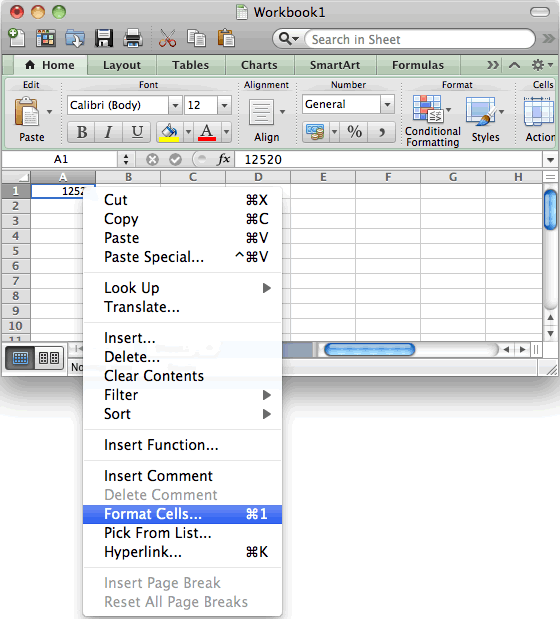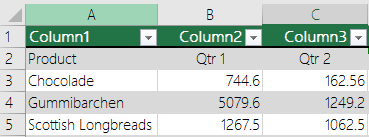

- Excel for mac 2011 select a column and row automatically how to#
- Excel for mac 2011 select a column and row automatically Pc#
Then I selected BOTH cells, via click-and-drag, and THEN I clicked the lower right-hand corner and dragged down. So, in the example here, I typed a 1 and then below it a 2. The trick is to enter not just the first item in the column, but also the second. But, when you get to the last two columns, those steps don’t work, and that’s because Excel doesn’t know whether we want to go up by one, or two, or five, or whatever. In fact, they work for the first four columns in our example. The four steps above will work in a lot of cases. Excel fills the cells with the right stuff. Click the lower right-hand corner with that black plus, hold the mouse button down, and drag down (or to the right). Move the mouse over that until the cursor looks like a little black “+” as shown below.Ĥ. Look for a little box at the lower right-hand corner of the selected cell. Click on the cell again to select it, and let go.ģ. Type something into a cell and hit Enter (or Return).Ģ. All I did was type the first row of data. Actually, I let Excel do most of the typing for me, using a feature called Auto Fill. That’s one cell of data per second– very, very, very quick, and it’s not because I’m such an amazing typist. It took me 59.4 seconds to enter this data. Notice anything? Of course you did– each column is a series, progressing from a starting item to an ending item in some sort of regular way.
Excel for mac 2011 select a column and row automatically how to#
How to Save Time with Auto-Fill in Excel. On subsequent pages, only row 4 will be repeated.Updated July 6th, 2016. When you print the spreadsheet, rows 1-3 will print as normal at the top of the page. For example, if you have a table of data where the headings appear in row 4, you could set the Rows value above to $4:$4.

Just click in the spreadsheet and select the rows you want from the spreadsheet (assuming you can see the rows you want to select).You can then select the rows you want from the spreadsheet you have open. The Page Setup dialog box will shrink down to just one line. For example, if you want the first 4 rows to repeat, type $1:$4.Ĭlick the selection box at the end of the box. A,B,C 1,2,3).Īt this point you will choose which rows should repeat at the top. It will print the Excel column and row references (i.e. This does something different to what this lesson covers. Note there is also an option here to print Row and column headings. If you want to print one or more columns to the left side of your print out, you could also follow the instructions below to print one or more columns to the left of each page.
Excel for mac 2011 select a column and row automatically Pc#
If you're used to using the PC version of Excel, this will look familiar but different:Ĭlick in the box next to Rows to repeat at top. The Page Setup dialog box will be displayed.

In the Page Setup section, click the Repeat Titles button: The ribbon will change to the Page Layout ribbon bar: Start by opening the spreadsheet you want to print.Choose the rows you want to print on each page The concepts are the same, but the steps are slightly different. You will also learn how to print header columns on the left of every page in your printout.Ĭlick here if you want to print header rows in Excel 2010 for Windows. This lesson shows you how to get header rows printing at the top of every page in Microsoft Excel 2011 for Mac. There is nothing worse than having a printout that runs to multiple pages, with the column headings only printed on the first page. column headings) on each page in the print out. When printing in Excel, it is sometimes useful to print a set of rows (e.g.


 0 kommentar(er)
0 kommentar(er)
